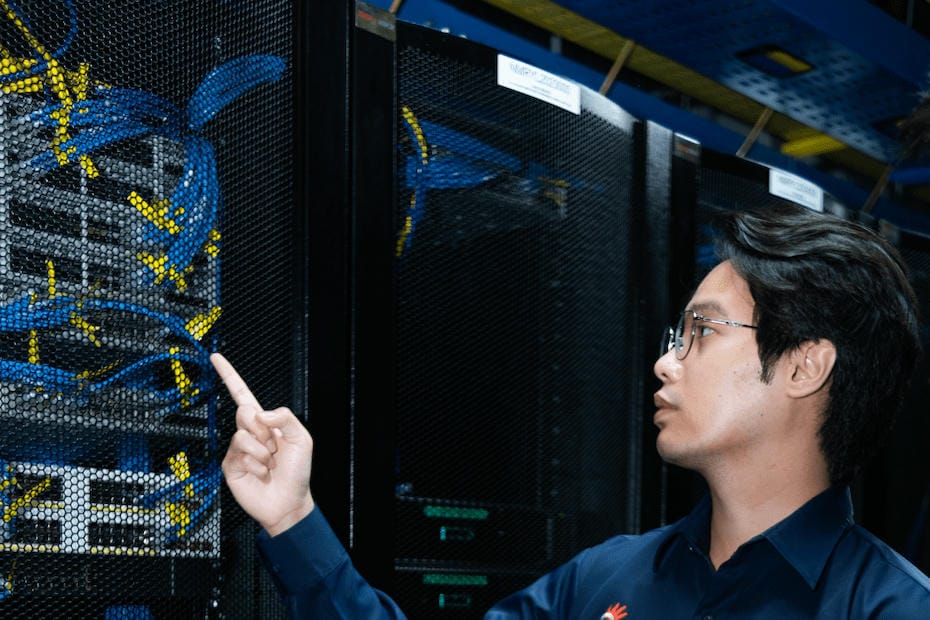09 May 2025
Overheating Can Damage Equipment in Data Centers
In today’s digital era, data centers have become the backbone of nearly every business that offers internet-based services — from digital banking and cloud services to government information systems. Behind the scenes of this 24/7 advanced technology operation lies a serious threat: overheating.
Although it may seem like a simple issue, overheating is actually one of the leading causes of hardware failure in data centers. When ambient temperatures and device heat levels exceed the tolerance limits, the consequences can be severe — ranging from degraded system performance and permanent server damage to costly and reputation-damaging downtime.
Why Is Overheating a Serious Problem in Data Centers?
Overheating is especially critical in modern data centers, which are packed with thousands of servers, networking equipment, storage systems, and supporting infrastructure — all operating continuously. Every component generates heat, and if this heat is not properly managed, room temperatures can rise dramatically.
What Are the Main Causes of Overheating in Data Centers?
Here are several key reasons why overheating poses a significant threat:
High Equipment Density
To save space and reduce operational costs, many data centers install hardware in high-density racks. This can lead to significant heat accumulation in confined areas.High Power Consumption
Servers and other equipment consume large amounts of electricity, most of which is converted into heat.Cooling System Failure
If the cooling system malfunctions, temperatures can spike within minutes, creating a critical situation.Tropical Climate
In countries with tropical climates like Indonesia, high temperatures and humidity levels exacerbate the risk of overheating.
The Impact of Overheating on Equipment
Overheating can cause both immediate and long-term damage. Some of the most notable impacts include:
System Performance Degradation (Thermal Throttling)
Most modern processors have a built-in thermal throttling mechanism that reduces processing speed to lower heat output. This can drastically slow down system performance, resulting in service delays or lagging applications.Hardware Component Failure
Critical components such as CPUs, GPUs, RAM, and hard drives are highly sensitive to high temperatures. Excessive heat can cause solder to melt, components to explode, or circuit boards to become damaged.System Downtime
When temperatures reach critical levels, systems may automatically shut down to prevent further damage. This downtime can severely impact digital services, especially if the data center lacks sufficient redundancy.Shortened Equipment Lifespan
Prolonged exposure to high temperatures accelerates the aging of electronic components, significantly reducing the lifespan of servers and networking equipment.Fire Hazard
Although rare, extreme overheating can result in electrical sparks or fires within server racks, especially in the absence of early detection systems or automated fire suppression.
Cooling Systems: The First Line of Defense
To combat overheating, modern data centers employ various cooling systems, such as:
Computer Room Air Conditioning (CRAC)
Specialized air conditioning systems designed for data centers, offering precise control over temperature and humidity.Hot Aisle – Cold Aisle Containment
Strategic server rack placement that separates hot and cold airflows to enhance cooling efficiency.Liquid Cooling
A technology that uses liquid coolant to absorb heat directly from CPUs and GPUs — ideal for high-density data centers.Proper Airflow and Ventilation
Utilizing duct systems and temperature sensors to manage airflow effectively and eliminate "hot spots" in specific areas.
Prevention and Monitoring Strategies
Beyond cooling systems, preventing overheating also requires proactive temperature monitoring and regular maintenance. Key strategies include:
Installing temperature and humidity sensors in every rack or zone within the data center.
Monitoring conditions via digital dashboards, complete with automated alerts when temperatures approach critical thresholds.
Conducting regular thermal audits to detect heat-prone areas and optimize airflow.
Overheating is not just a technical issue — it is a serious threat to business operations, reputation, and sustainability, especially in the digital age. Keeping equipment within optimal temperature ranges is essential to protecting valuable digital assets. This risk can be minimized through proper design, advanced technology, and continuous preparedness.
To reduce the risk of overheating, consider using data center services from neuCentrIX. Visit www.mycarrier.telkom.co.id to learn more.
Is this information helpful?
